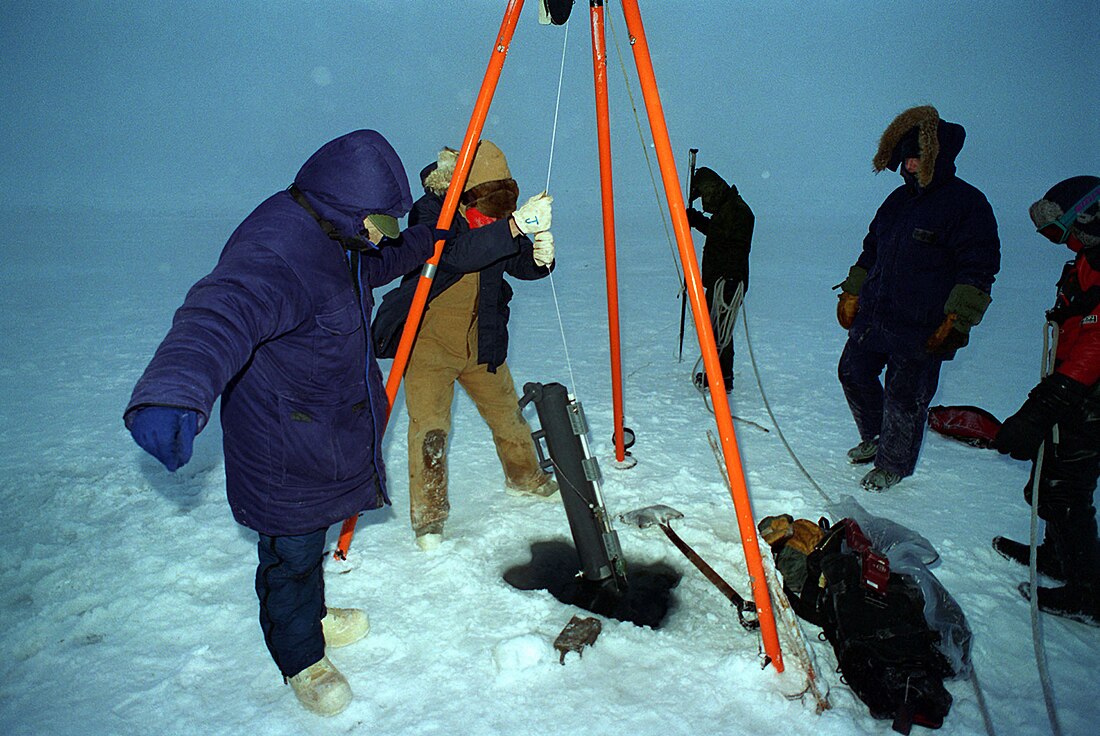Top Qs
Timeline
Chat
Perspective
SCICEX
Research program involving a collaboration between the U.S. Navy and academic researchers From Wikipedia, the free encyclopedia
Remove ads
SCICEX, standing for Scientific Ice Expeditions, was a five-year (1995–1999) scientific research program involving a collaboration between the U.S. Navy and academic researchers from a variety of different universities. The object of study was geophysical and oceanological conditions in the Arctic Ocean. The Navy made available a nuclear submarine for each research cruise.

Margo Edwards was the chief scientist for the 1999 expedition[1] and spent thirteen days on the USS Hawkbill, thereby becoming the first women to live aboard a Navy nuclear submarine during under-ice operations.[2] Edwards' research found evidence of climate change in the Arctic, including thinning sea ice,[3] volcanoes on the seafloor,[4] and warm water moving into the Arctic from the Atlantic Ocean.[2] These data are available for anyone to view.[5]
Remove ads
List of Expeditions
- SCICEX/93 · USS Pargo
- SCICEX/95 · USS Cavalla
- SCICEX/96 · USS Pogy
- SCICEX/97 · USS Archerfish
- SCICEX/98 · USS Hawkbill
- SCICEX/99 · USS Hawkbill
External links
- SCICEX web site
- 2004 article on the SCICEX program in Arctic Research of the United States magazine
- SCICEX/96 photo gallery on the USS Pogy web site
- SCICEX/98 Navy Mission Report
- SCICEX Phase 2 Memorandum of Agreement[dead link] from 2000 on the Arctic Submarine Laboratory web site
- SCICEX/99 page at the USS Hawkbill web site
- SCICEX/99 page at the University of Alaska Fairbanks Institute of Marine Science
- CNN documentary on SCICEX/99
- Article on SCICEX/99 in Undersea Warfare magazine
- USS Pogy Alumni Site
Remove ads
References
Wikiwand - on
Seamless Wikipedia browsing. On steroids.
Remove ads


